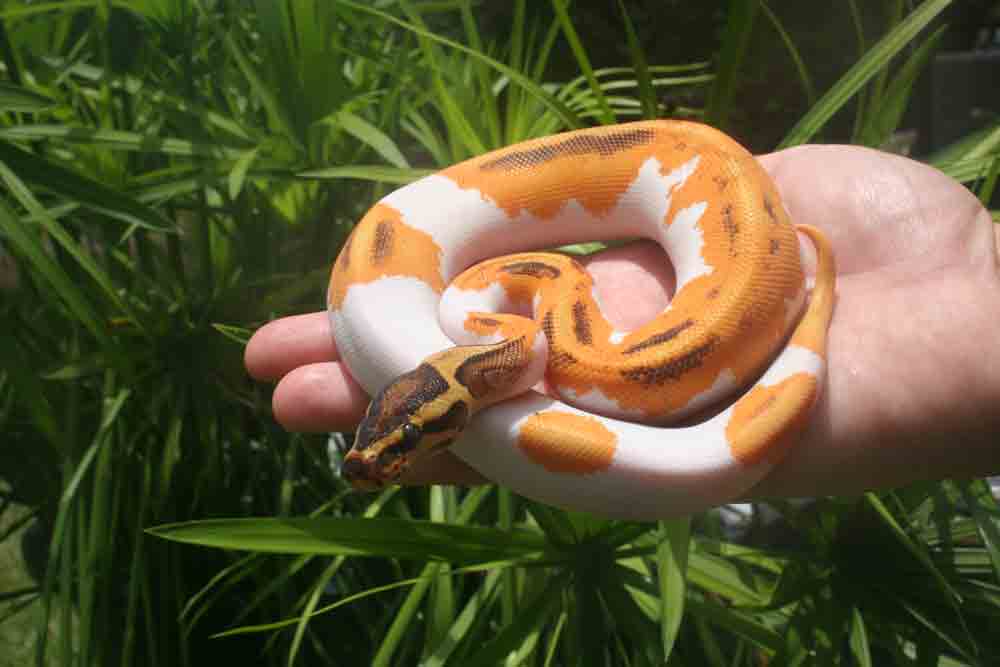The piebald ball python is arguably one of the most stunning ball python morphs, and until now, the gene that creates this pattern of coloration was n
The piebald ball python is arguably one of the most stunning ball python morphs, and until now, the gene that creates this pattern of coloration was not known. Researchers with McGill University set out to determine what creates the piebald gene and determined that one particular gene called tfec, plays the major role in reptile pigmentation that causes the blotches of white piebald coloration.
“Ball pythons show incredible variation in skin colouring and patterning, which is part of their appeal for hobbyists, but also makes them really useful for researchers who want to understand the genetic basis of colouration,” Rowan Barrett, Interim Director of McGill University’s Redpath Museum, the Canada Research Chair in Biodiversity Science, and the senior author on the recent paper in Current Biology said in a statement released by the university. “The pet trade has created a huge pool of colour variation that would not have existed otherwise. This provides a catalogue for us to figure out the many ways that genes produce the amazing diversity of colours, spots, and stripes we see across different animals.”
The team used whole gene sequencing, gene-editing, and electron microscopy and shed skin collected from snake breeders to determine that the piebald snakes carry the same mutation in the tfec gene that causes the white coloration. In addition, the scientists worked with Doug Henke of the University of Georgia to modify a tfec gene in the brown anole lizard using gene editing technology called CRISPR. They determined that the genetically modified lizards show altered coloration and proved that mutations of tfec does cause changes to color-producing cells.
Ball Python History, Care And Breeding
According to the university, the sale of captive bred reptiles in the United States ia $1.4 billion industry and 4.5 million American households keep reptiles. One in five of those households keep snakes that are bred in captivity. And the ball python is arguably the most popular captive bred snake and the most popular snake amongst reptile keepers.
“Our research advances knowledge of the genetics of vertebrate colouration generally and particularly of the development of iridescent cells, which haven’t been studied as much as other colour pathways” Alan Garcia-Elfring, a PhD student in McGill’s Biology Department and the first author on the paper said. “It also highlights the potential benefits of working with non-academic communities like ball python breeders to accelerate discoveries in fundamental science. Our job, at this point, is to figure out what other mutations underlie all this variation seen in captivity, and how these mutations interact. It’s an exciting time for both researchers and reptile hobbyists.”
An abstract of the research paper, “Piebaldism and chromatophore development in reptiles are linked to the tfec gene” can be read on the Current Biology website.
Ball Python Information
Ball pythons are one of the most popular snakes in the hobby and come from western Africa. They are widely captive-bred throughout the United States. They grow to about five feet in length and can live for 30 years or more. If you keep a ball python, or any snake, please ensure that its enclosure is escape-proof. The ball python requires specific care requirements and with the exception of ball python breeders, should be kept in a minimum 40 gallon equivalent enclosure. A 4′ x 2′ x 2′ enclosure is ideal. The bigger the enclosure, the better. And contrary to popular belief, this species does climb. Other morphs in addition to the piebald morph include axanthic, clown, labyrinth, jungle, pastel-jungle, tiger, spider, banded, black, black-backed, ghost, narrow-striped, wide-striped, ringer, black-and-white, high-gold, tyrosinase-positive, caramel albino, tyrosinase-negative, albino, leucistic, just to name a few. The possibilities in creating new morphs of this species is seemingly endless.


